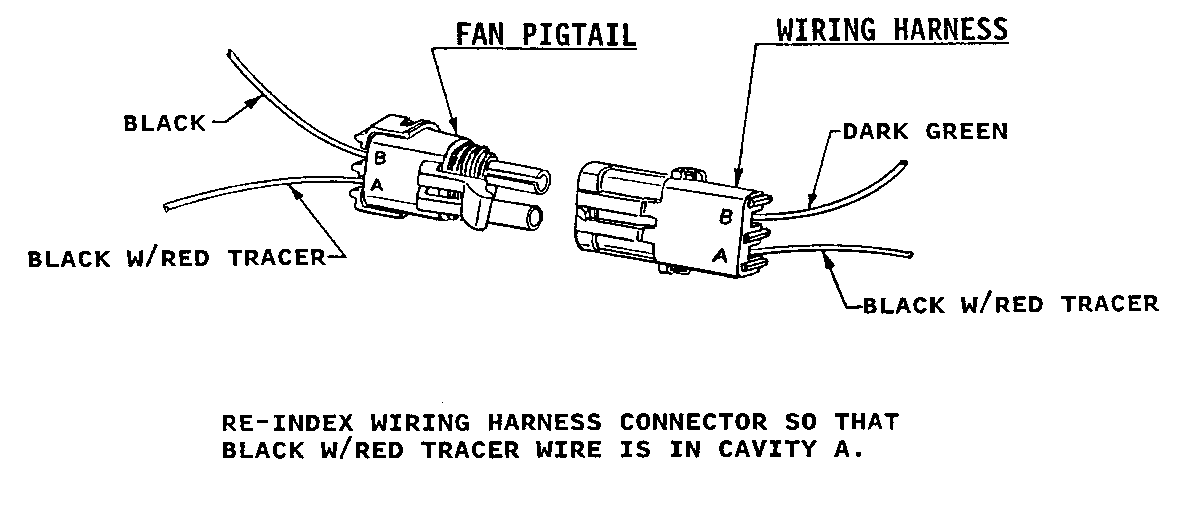HARD START,SURGE/HESITATION HOT FUEL HANDLING PROCEDURE

VEHICLES AFFECTED: 1983-85 'F' CARS WITH L69 ENGINES (ENGINE CODE G) 1983-87 'F' CARS W/MANUAL TRANS. AND LG4 ENGINES (ENGINE CODE H)
THIS BULLETIN SUPERCEDES BULLETIN 86-650-101 DATED; March 17, 1986 which should be discarded.
Customer comments of vehicle surge, hesitation, and/or stumbles after the vehicle has reached operating temperature, then parked and restarted, (Hot Soak) may be received. This condition is caused by a large temperature difference between the carburetor fuel bowl and the fuel delivered from the fuel tank. This condition may be addressed by installing an auxiliary blower fan, which reduces the temperature of the fuel bowl during a hat soak. The fan is designed to operate at an engine coolant temperature of 220 degrees Fahrenheit (106 degrees C) and stay operational until the coolant reaches 195 degrees Fahrenheit (90 degrees C). This will maintain a fuel bowl temperature of approximately 165 degrees Fahrenheit (74 degrees C).
Listed below are Hot Fuel Handling service kit part numbers:
P/N Usage 14094394 Chevrolet "F" Cars 14094395 Pontiac "F" Cars
NOTICE: SOME KITS HAVE BEEN REPORTED WITH THE TWO WIRES AT BLOWER MOTOR CONNECTOR REVERSED. THIS CAUSES THE BLOWER MOTOR TO RUN BACKWARDS, RESULTING IN REDUCED AIRFLOW TO THE CARBURETOR. THIS REDUCED AIRFLOW MAY NOT ADEQUATELY ADDRESS THE HOT FUEL CONDITION.
BEGINNING WITH THE 1987 MODEL YEAR, VEHICLES PRODUCED WITH LG4 ENGINE AND MANUAL TRANSMISSIONS HAVE AUXILIARY FANS.
WHEN INSTALLING KITS OR INVESTIGATING HOT FUEL PROBLEMS. CHECK FOR THE PROPER INDEXING OF THE WIRING CONNECTOR PER ATTACHED ILLUSTRATION.
IN EACH KIT THERE IS A ONE PAGE FLYER EXPLAINING THE BLOWER KIT OPERATION. PLEASE ENSURE THAT THE CUSTOMER RECEIVES THIS FLYER.
Use Applicable Labour Ops.

General Motors bulletins are intended for use by professional technicians, not a "do-it-yourselfer". They are written to inform those technicians of conditions that may occur on some vehicles, or to provide information that could assist in the proper service of a vehicle. Properly trained technicians have the equipment, tools, safety instructions and know-how to do a job properly and safely. If a condition is described, do not assume that the bulletin applies to your vehicle, or that your vehicle will have that condition. See a General Motors dealer servicing your brand of General Motors vehicle for information on whether your vehicle may benefit from the information.
